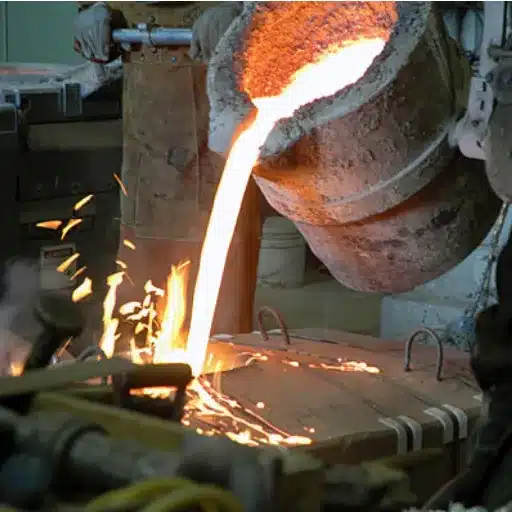Check up the uses of stainless steel on the internet, and you will hardly find anything that has been manufactured without the use of stainless steel. It is used to manufacture products meant either for the consumer market or the industry. The backbone of all the steel products rests on the fact that they make long steel girders for tall buildings. The girders are corrosion resistant, and from an architectural point of view, they look stunning as well. While manufacturers claim to use stainless steel in various functional areas, they never talk about the annealed or bright annealed stainless steel. To pick the right grade, it is important to understand the methods used to process stainless steel, otherwise, downfall is guaranteed.
This includes terms such as ‘bright annealed’ and ‘annealed’. Right from the start, these terms bear a significant semblance. However, there exist striking differences that can affect performance and visual appeal in different applications. In contrast to bright fixed, bright annealed is widely adopted in industrial applications. Hence, without further consultations, let us deep dive into annealed and bright annealed exchangers for a difference without confusion.
What is the Annealing Process for Stainless Steel?
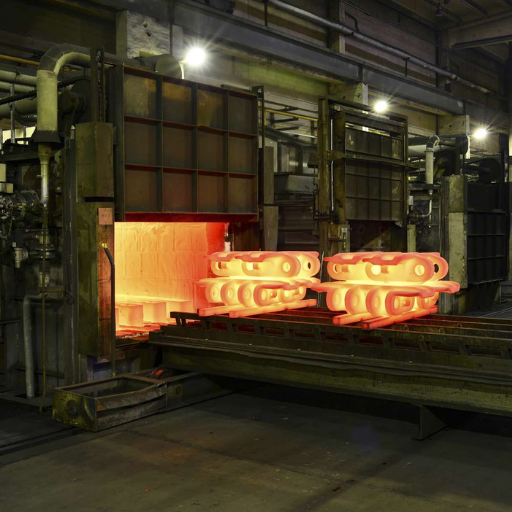
Stainless steel undergoes an annealing process of heating, soaking, and controlled cooling. Heats internal stresses, softens steel, improves ductility, and corrosion resistance. The method of heating and cooling depends on the type of stainless steel, while the temperature and the cooling process are done in a shielded atmosphere to avoid surface oxidation.
How Does the Basic Annealing Heat Treatment Work?
Stainless steel is subjected to an annealing heat treatment that is carried out in three stages: heating, holding, and controlled cooling. The grade of stainless steel determines the heating temperature. For instance, the temperature range for stainless steel heating is 1,900°F to 2,100°F (1,040°C to 1,150°C). At a specific high temperature, the metal’s crystal structure enables the metal to achieve a phase referred to as austenite. After achieving the target temperature, a certain material is held at that temperature. While at that temperature, the material undergoes a self-relaxation process, which relieves internal structural stresses and ensures that the structure is steady and homogeneous.
Post the holding phase, the material undergoes rapid controlled cooling, which is usually done by quenching in air or water. The cooling is to avert the formation of carbides, which are unwanted phases that reduce corrosion resistance. Other advanced methods use vacuum furnaces or inert gas atmospheres to curtail oxidation during the treatment. Studies suggest that proper annealing significantly improves the steel’s ductility and toughness, making the metal adaptable for use in aerospace, chemical processing, and medical device industries.
Why is Annealing Important for Stainless Steel Properties?
Annealing Is Essential to Improving the Mechanical and Structural Attributes of Stainless Steel. This Process of Heat Treatment is Used to Remove Internal Stresses Associated with Manufacturing Welding, Machining, and Cold Working. The Relaxation of Stresses During Annealing Improves the Structural Strength of Stainless Steel and Lessens the Risks of Cracking and Deforming Under Operational Loads.
It Is Reported That Annealing Improves The Strength Properties, Such As Tensile Strength and Elongation, When Performed at Temperature Ranges of 1800 Degrees Fahrenheit to 2100 Degrees Fahrenheit and Controlled Cooling. Oberon Industries: Alloys-like Austenitic Stainless Steels Used In Medical and Chemical Industries Have Annealed Pitting Corrosion Resistance Over 30% Compared To As-Fabricated Materials. Furthermore, Annealing Improves The Uniformity of the Grain Structure of Steel, Resulting In Greater Fatigue Resistance and Increased Durability Under Harsh Operating Conditions.
The passive layer, or the protective oxide layer of chromium, is another crucial benefit that comes from annealing. With regards to the steel’s corrosion resistance in relation to powerful acids, chlorides, and humid conditions, this is particularly critical. Industries like aerospace, which depend on precision and strength, utilize annealed stainless steel for its ability to perform under extreme temperatures and mechanical stresses.
What Happens During Open-Air Annealing?
The annealing is done using open air when the stainless steel is heated to a temperature in the range of 1900-2200 degrees Fahrenheit (1040-1200 degrees Celsius), depending on the stainless steel alloy grade. This process allows for the realignment of the steel crystal structure and stress relief from previous thermal or mechanical treatment done on the steel. The steel is either quenched or allowed to cool in still air to achieve the desired mechanical properties.
When the steel is in open air, its surface can combine with oxygen resulting in the formation of a chromium oxide scale, or, as it is commonly called, surface oxidation. If not properly managed, the valve’s oxidational corrosion resistance property can be depleted. Studies showed that using protective atmosphere throughout annealing or thorough material downgrading deals restoring these properties was crucial.
The issues presented above have encouraged modern industries to specialize in the post-treatment procedures, such as pickling or passivation, which work appropriately in reducing oxidation and ensuring the stainless steel works under extreme conditions. Also, controlling the temperature during the entire process, ensuring the steel does not lose its strength or ductility while holding the component, enables the manufacturer to achieve constant flow in production.
What is Bright Annealing and How Does It Differ from Standard Annealing?
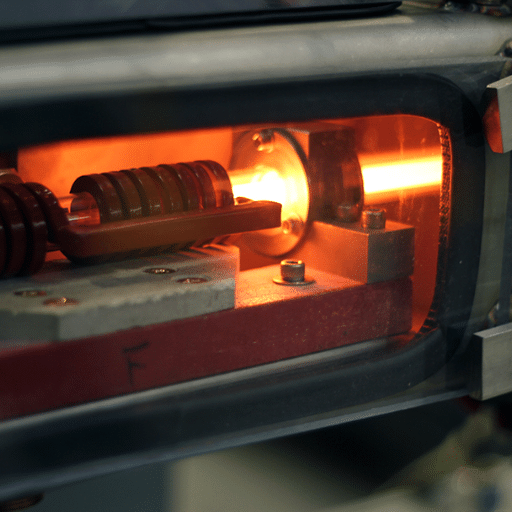
Bright annealing is a type of annealing, a heat-treating process that alters the physical and sometimes chemical properties of a metal to remove internal stresses and improve its machining qualities while making it softer and easier to work with. In bright annealing, an inert gas or hydrogen is used, preventing oxidation from occurring on the metal surface. Hydrogen helps prevent the air from getting to the surface, meaning there will be no discoloration or oxidized surfaces. Since hydrogen is used, no further descaling procedures will be required. Stainless steel and various alloys need to undergo rigorous descaling procedures to make them pristine because they undergo great surface abrasion. Thus, bright annealing will further reduce their corrosion resistance.
How Does the Bright Annealing Process Maintain Surface Finish?
The bright annealing process helps maintain the surface quality of the material due to the controlled atmospheric heating conditions employed. Oxidation and scaling, which usually take place when materials are heated in air, are avoided through the use of inert or reducing gas atmospheres like hydrogen or hydrogen-nitrogen mixtures. Oxygen levels in the annealing environment must be less than ten ppm to yield effective results. Such low oxygen levels ensure that the surface is cleaned and stays reflective during the entire heating cycle.
Temperature control is equally important to maintain the surface quality of the material. The bright annealing temperature for stainless steel alloys is between 1850°F and 2150°F (1010 °C and 1175 °C). Cautious control of the heating and cooling rates eliminates thermal stress, which helps reduce the chances of surface scaling, warping, or imperfections. Surface finish, as well as corrosion resistance, is improved as a result of these processes, which is critical for the aerospace, medical, and food processing industries.
What Role Does Protective Atmosphere Play in Bright Annealing?
Success of the bright annealing process relies heavily on the protective atmosphere. In this case, a protective atmosphere refers to an inert or reducing gas such as hydrogen or nitrogen that removes oxygen and other reactive elements within the material’s enclosure. Through purging oxygen, the protective atmosphere curtails oxidation, discoloration, and scale formation over the material’s surface.
Industries, for example, tend to use gas streams rich in hydrogen to create an environment that literally increases selectively attacked corrosion resistance and retains the shiny surface. Research also indicates that an exceptionally low gas purity level beyond 99.99% is maintained; the guarantees of risk of contamination is so low within gaseous space that it ensures surface quality is optimal. Enhanced treatment uniformity, precision control of gas feed rate into the chambers, and uniformity throughout the chamber all add to the issue of surface quality, particularly for aerospace and medical grade materials with high quality requirements.
Enhancement of gas control technologies augments efficiency concerning resource and fuel optimization while streamlining the flow of operations, thereby solidifying the role of the protective atmosphere in modern processes employing bright annealing.
Why is Bright Annealing Preferred for Austenitic Stainless Steel?
The bright annealing of austenitic stainless steel is perhaps the most popular method when treating stainless steel because it improves the mechanical properties of the material while maintaining the surface characteristics and not changing the outer appearance. In bright annealing, the material is heated to a precise temperature range of 1040 to 1150 degrees centigrade, in an inert gas such as hydrogen or nitrogen-hydrogen gas. This environment allows for the absence of oxidation and discoloration, allowing the material to keep its mirror-like smooth surface finish.
The grade of austenitic stainless steel does benefit from the bright annealing process as it helps in improving the corrosion resistance, sort of like maintaining the life of the steel, and mechanical strength. The removal of oxides and other impurities from the surface allows for better performance in chemical processing, food production, and even some places in the marine industries. Also, studies show that bright annealing is effective in reducing the precipitation of chromium carbide, and therefore reducing the risk of intergranular corrosion, a severe problem for stainless steel when used under high temperatures.
Sectors like aerospace, medical instrumentation, and automotive manufacturing, which utilize austenitic stainless steel, rely on the exactness provided by bright annealing. This technique stands out in high engineering applications because it bolsters the material’s durability and lifespan while simultaneously fulfilling rigid quality requirements. The precise control of temperature and superior gas control systems employed during the procedure significantly improve the performance of the material, its reliability over time, and its long-term dependability.
What Equipment and Conditions Are Required for Different Annealing Types?
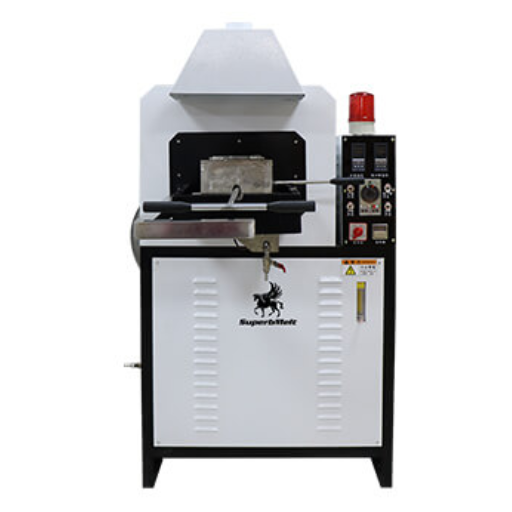
- Bright Annealing
-
-
- Equipment: Annealing furnaces with gas control or allotriometric oxygen flow.
- Conditions: Hydrogen or nitrogen in the inert form, and other noncontaminating gases and pure substances within the defined limits of the temperature range to prevent oxidation.
-
- Full Annealing
-
-
- Equipment: Batch furnace and broad-purpose finisher.
- Conditions: Intended temperature set above the recrystalyzation region and is held for sufficient time until all the material turns into liquid, and then cooled down slowly.
-
- Stress Relief Annealing
-
-
- Equipment: Electric or gas furnaces.
- Conditions: Operated at lower heat than full, getting soft while maintaining structure, accomplishes stress relieving.
-
- Spheroidizing Annealing
-
-
- Equipment: Ovens fueled by gas and electricity.
- Conditions: Spending time above the critical temperature for uniform carbide formation, or repeated cooling and heating cycles.
-
Such requirements are bespoke to the sort of annealing needed to achieve the best results for the various industrial applications.
What Type of Furnace is Used for Conventional Annealing?
The regular routers or furnaces that are used during the traditional types of annealing processes include that of box and pit routers. These gadgets need to have a specific temperature set and spread evenly so that heat can be applied uniformly. Each industrial annealing furnace differs in design and purpose. They are traditionally categorized into continuous furnaces or batch types depending on the needs of the workpiece being treated.
- Box Furnaces: Perfect for batch processing, these are multi-purpose items with insulated chambers that keep a constant temperature which could be anywhere from 1200°F to 1600°F (650°C to 870°C) depending on the metal used.
- Pit Furnaces: These furnaces have vertical dispositions are and are great to use on long and heavy components. They provide uniform heating by enclosing the material in a controlled atmosphere, and they are used for annealing larger workpieces like shafts or rods.
- Continuous Furnaces: Optimized for mass industrial processes, these furnaces transport materials on a conveyor belt and pass them through distinct temperature zones, allowing for fast and efficient soaking. Each furnace has defined temperatures and cycle times, which can be altered to fit the material and required features.
Most contemporary furnaces for annealing are outfitted with systems capable of providing optimized inert gas or reducing atmospheres to prevent oxidation and ensure uniform microstructural alterations. Furthermore, modern industries are increasingly concerned about the quality, precision, automation, and temperature control, which are enhanced by modern sensors and automation systems.
How Does a Bright Annealing Furnace Differ from Standard Furnaces?
A bright annealing furnace is geared for achieving a surface finish that is unmarred by oxidation, discoloration or scaling, and such is achieved by using a controlled atmosphere. The bright annealing furnaces, in contrast to standard annealing furnaces, whose operations may allow some oxidation due to the presence of atmospheric oxygen, works in an environment with lesser levels of oxygen. This is normally done by flooding the furnace with protective gases such as hydrogen, nitrogen, or a mixture of both.
The hydrogen atmosphere in bright annealing furnaces is tightly controlled to the extent that the surfaces of metals do not lose their bright, polished, and reflective luster. Stainless steel parts annealed in bright furnaces, for instance, tend to be more visually attractive than those subjected to oxidation because the absence of surface imperfections due to corrosion greatly enhances the stainless steel’s aesthetic appeal and corrosion resistance. According to industry standards, the atmosphere in a bright annealing furnace is usually at a dew point of -40°F (-40°C), therefore minimizing moisture in the environment and preventing oxidation.
The temperature control features of Bright Annealing Furnaces are Free-Pass, Band control, and Advanced control anticipation, making it possible to maintain consistent working conditions. Depending on the material, these furnaces reach operating temperature of approximately 2200°F. These specifications guarantee requirements for quality products during the annealing process. This makes these furnaces very popular amongst Advanced Material Systems, Medical and surgical instruments, and Aerospace devices.
What Gases and Atmosphere Control are Essential for Bright Annealing?
To control oxidation, discoloration, or any unwanted scaling of the metals during the bright annealing process, it is paramount that the atmosphere is controlled, which helps lead to the success of bright annealing. Hydrogen, Nitrogen, and Argon are the most common gases used in these processes due to the fact that these gases have certain properties that can be applied during bright annealing.
- Hydrogen (H₂): The reducing characteristics of hydrogen make H2 a particularly potent substance since it helps prevent oxidation. Depending on the case, it is used either in a pure form or mixed with nitrogen. In addition, hydrogen is capable of removing residual oxygen from the furnace atmosphere, which guarantees a pristine metallic surface. Studies indicate that varying hydrogen levels from 25% to 100% can affect the finish and quality of the materials being treated.
- Nitrogen (N₂): Nitrogen is usually mixed with hydrogen for controlling dew-point to keep the process environment free of moisture, hence nitrogen is often used as a carrier gas or inert filler for atmospheric control. Nitrogen practice includes the maintenance of dew-point to reduce temperature decrease oxidation risk, often as low as -40°F (-40°C).
- Argon (Ar): Argon is especially useful for surfaces undergoing surface reactions, due to it been an inert gas and requiring ultra high purity levels. It’s used broadly in specific fields such as medical or aerospace components where they maintain high levels of quality control.
The flow rates and types of gases used for the process have been adjusted to correspond with the process temperature and the materials being worked on. A controlled atmosphere improves the physical and visual characteristics of metals and minimizes material waste and the amount of defects produced—permitting greater cost-effectiveness and ecological balance in manufacturing.
How Do Surface Characteristics Compare Between Annealed and Bright Annealed Steel?
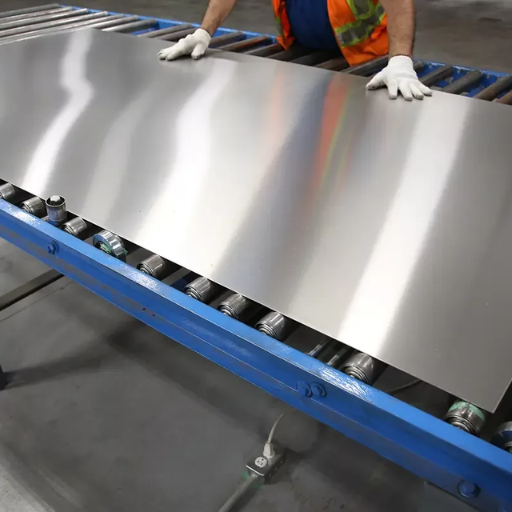
Due to oxidation forming an oxide layer, the surface of annealed steel is generally dull and rough. Bright annealed steel, however, is subjected to heat treatment, which is done in a controlled atmosphere to remove oxidation. This results in a smooth, reflective, and uniform surface. The distinction in surface quality makes bright annealed steel even more appropriate for use in applications with new aesthetic appeal requirements or those needing enhanced resistance to corrosion.
Why Does Oxide Scale Form During Conventional Annealing?
Oxide scale is produced by the exposure of steel to high temperatures in the presence of oxygen or other oxidizing agents during conventional annealing. The surface of the steel burns in the presence of oxygen at higher temperatures, giving rise to iron oxides, or scale. The development of this oxide layer is dependent on variables such as temperature, time, and the composition of the steel.
In most cases, an increase in temperature or exposure time increases the thickness and prominence of the oxide scale. Studies indicate that the rate of oxidation is greatly increased for annealing temperatures exceeding 900°C (1652°F). Scale formation is particularly pronounced with steel grades that contain larger amounts of reactive elements such as silicon. Furthermore, moisture and other impurities in the annealing atmosphere can promote oxidation and, as a result, reduce surface quality while increasing material waste. To reduce the amount of oxide scale and enhance the quality of the product, control methods using inert or reducing gas environments during heating are often employed.
How Does Bright Annealing Prevent Oxidation?
Bright annealing is a method of treating metals with heat to remove or minimize oxidation using a protective gas atmosphere. Such gas is usually devoid of oxygen and is often made of inert gases like nitrogen or reducing gases such as hydrogen. Bright annealing prevents the formation of oxide scales on metals by preventing oxygen contact during the heating process, thus allowing the metals to maintain their surface finish.
The factors that elucidate the effectiveness of bright annealing are precise temperature and atmosphere control. Research shows that an effective bright annealing temperature is kept within certain limits based on the material being treated; for example, stainless steels are bright annealed at temperatures between 1850 °F and 2100 °F, or 1010 °C – 1149 °C. The heat aids in recrystallizing the metal, having it obtain better mechanical properties like ductility and strength, while the specific atmosphere inhibits unwanted reactions.
Data continues to support the effectiveness of bright annealing by demonstrating a decrease in surface oxidation of as much as 90% in comparison to the open-air annealing method. Surface roughness (Ra) values of less than 0.3-0.5 µm are routinely accomplished by manufacturers, guaranteeing a smooth, reflective surface vital for the food processing and pharmaceutical industries, which have stringent contamination control requirements. Bright annealing is still one of the leading methods in producing metal parts with no oxidation due to the use of advanced gas mixtures and other monitoring systems.
What Are the Appearance Differences Between These Annealing Types?
The differences in outcomes for bright annealing and air annealing stems from the atmospheric environment during the processes. Bright annealing requires a clean surface which is free from oxidation, scaling and discoloration, thus are performed under controlled inert or reducing atmospheres (like hydrogen or nitrogen gas mixtures). This is important for the food, surgical and aesthetic industries. The end result is a surface of mirror finish.
Due to the harvesting of oxygen needed for air annealing, opportunistic scaling and blemishing occur on the surface of the metal. The layer must be removed through multiple post-processing approaches, like pickling or grinding. Additionally, air annealed metals are prone to particular compositions of the alloy and the environment. This leads to a more diverse but less streamlined look in comparison with bright annealed materials.
Most recent studies indicate that roughness measurements Ra values for bright Annealing metals are below 0.3 – 0.5 μm. That of air Annealed materials is much higher unless post-processing refinement is done. For sectors with strict requirements for aesthetics and hygiene, bright annealing is the most logical option.
What Are the Applications and Benefits of Each Annealing Method?
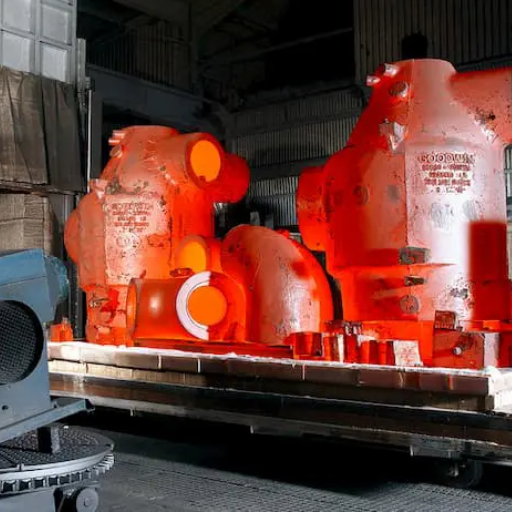
Bright Annealing
- Applications: Uses in the food processing, electronic, and pharmaceutical industries because of their extreme cleanliness and appealing aesthetic.
- Benefits: There is smooth surface with reflectiveness accompanied by little oxidation and contamination which mitigates the amount of cleaning or finishing needed.
Air Annealing
- Applications: Widely used in construction, automotive, and machinery where aesthetics are not essential.
- Benefits: It is a low cost process which makes it ideal for projects which need strong, semi-finished materials.
When is Standard Annealing the Preferred Method?
When materials require improved ductility, lowered hardness, and enhanced machinability, standard annealing is often the preferred approach. This approach is common practice in units such as aerospace, automotive, and other areas of manufacturing where mechanical precision is vital. For metals like stainless steel, aluminum alloys, and sometimes even copper, the grain structure along with the internal stresses due to prior processing is optimized and taken care of through the benefits annealing offers.
Evidence shows that the ductility of a material is boosted by 30% on average through annealing, while brittleness is reduced significantly. As an example, various components of stainless steel undergo annealing and as a result, the average tensile strength is enhanced by 10-15%, which makes them suitable for use in high-stress environments. In addition, standard annealing helps achieve blanking uniformity in large quantities of metal pieces, which makes them perform the same way across the board. Such reliability becomes crucial while dealing with functionality and endurance.
What Industries Require Bright Annealed Stainless Steel Tubing?
The difference between bright annealed stainless steel tubing and other types of steel tubing is that it offers higher corrosion resistance, a smooth interior finish, and greater durability. Such properties enable its use in the following industries:
1. Medical and Pharmaceutical Industry: These industries require strict hygiene standards alongside equipment with fine measurements. Bright annealed tubing is needed In manufacturing stage of surgical instruments, catheters, and lab equipment because of its passivity and simplicity in sterilization. As an example, various grades of stainless steels like 316L are used in these industries since they are very clean and biocompatible.
2. Food and Beverage Industry: Food production lines rely heavily on tubing used in conjunction with harsh cleaning chemicals. The food processing industry also relies on steel tubes for maintaining purity. The uses for bright annealed surfaces extend into the Dairy processing, brewing, and beverage manufacturing industries. The steel’s smooth texture and scratch-free surfaces make it less likely for residues to accumulate over time. This helps lengthen equipment lifespan.
3. Petrochemical and Chemical Industry: An industry that handles quite potentially damaging corrosive fluids and known strong acids and steam. Bright annealed stainless steel tubing is exceptionally good at withstanding chemical processes operating under heat exchangers, chemical reactors, and transfer pipelines. Extreme water safety, as well as pitting and crevice corrosion prevention, is critical for safety and reliability.
4. Automotive and Aerospace Industries: Uses bright annealed tubing from the automotive and aerospace sector to enhance design owing to high strength to weight ratio. It is applied in fuel lines, hydraulic systems and even extends to the exhaust system. Structural integrity under extreme pressures and shifting temperatures is vital for companies around the globe.
Evidence shows that the ductility of a material is boosted by 30% on average through annealing, while brittleness is reduced significantly. As an example, various components of stainless steel undergo annealing and as a result, the average tensile strength is enhanced by 10-15%, which makes them suitable for use in high-stress environments. In addition, standard annealing helps achieve blanking uniformity in large quantities of metal pieces, which makes them perform the same way across the board. Such reliability becomes crucial while dealing with functionality and endurance.
How Does Each Method Affect Corrosion Resistance and Ductility?
Numerous forms of manufacturing and surface finishing techniques can have a direct impact on the corrosion resistance and ductile nature of stainless steel tubing, especially with a bright anneal finish. For example, the annealing process of heating the steel to certain temperatures, keeping it for a certain duration, and then cooling it gradually improves the ductile nature as it relieves internal stresses and refines the microstructures. This is particularly beneficial for applications that require structural flexing, but at the same time need to maintain some strength.
However, the surface finish, along with the oxide layer protection, has a great effect on the corrosion resistance. Bright annealing creates a polished, smooth surface that reduces the chances of corrosion due to crevices getting clogged with corrosive agents. Numerous studies conducted show that bright annealed tubing in general models is used less for other steel types and in fact has lower corrosion rates, especially when the steel is used in components with chlorides or acidic agents. Also, further oxidation and pitting resistance are ensured by the barrier chromium oxide layer produced during the annealing procedure.
Data confirms that under variable operational states, even in harsh industrial settings like a chemical processing plant or heavy duty marine installations, both Type 304 and 316 grade stainless steel bright annealed finished variants survive remarkably high factors of ductility and corrosion resistance. These features make the steel be useful in scenarios where durability and structural integrity is of utmost importance.
How Does the Annealing Temperature Impact Stainless Steel Properties?
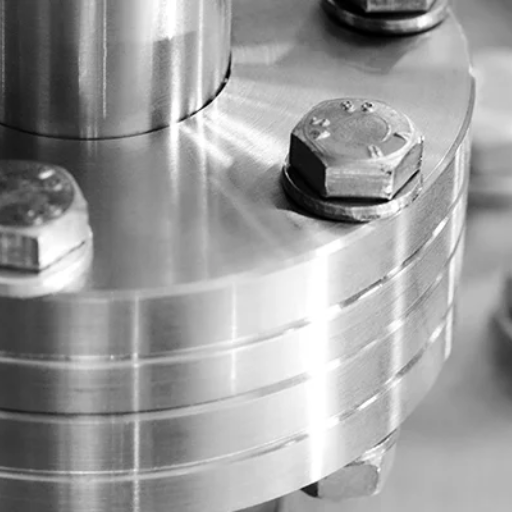
The microstructure and mechanical properties of stainless steel are substantially affected by the annealing temperature. For example, the annealing temperature of 1040°C to 1120°C (1904°F to 2048°F) provides enhanced corrosion resistance by homogenizing internal structures and dissolving chromium carbides. Also, at these temperatures, the grain size improvement also augments the material’s ductility and toughness. Studies suggest that Type 304 and 316 stainless steels have the optimal mechanical performance when properly annealed at these controlled temperatures.
Increasing or decreasing the temperature of annealing beyond these constraints is detrimental. If the temperature is too high, it will result in excessive grain growth, reducing mechanical strength and causing potential discoloration. Alternatively, if the temperature is too low, it may lead to the formation of chromium carbides, which can precipitate along the grain boundaries, creating intergranular corrosion susceptibility. According to data, stainless steel, which has undergone proper annealing, possesses tensile strengths surpassing 515 MPa (75 ksi) and ductility of more than 40%. Such features ensure the material’s strength and adaptability across various industrial applications.
Maintaining precision in the managing of the annealing conditions is critical for achieving all the properties of interest. The rate of cooling which is done after the annealing is done, also has significant impact on the steel and makes in a very crucial step of the entire treatment process.
What Temperature Ranges Are Used for Different Annealing Processes?
The methods of altering the materials’ internal structure using heating and cooling are called the annealing processes. Changing the mechanical properties of metals requires a distinct range of heating and cooling temperatures to be followed.
- Full Annealing: Full annealing can be best showcased when dealing with carbon steel. Heating of carbon steel is done to around 50–100°C above the critical temperature which is around 727°. The carbon steel undergoes transformation when fused using a furnace, slowly cooling it down to enhance its softening and the ability to work with machines.
- Process Annealing: Restoration of ductility not only after deformation but during the cold working processes is due to Process annealing. Unlike full annealing Process annealing deals with low-steel carbonate that undergoes heating during the 550° to 650° region.
- Stress Relief Annealing: Recovery of residual stress levels in a material and the change of critical mechanical properties is stress relief annealing. This process happens for particular materials around the 200° to 700° region.
- Spheroidizing Annealing: Occurs at approximately 700–750°C (below the eutectoid temperature) for high-carbon steels requiring excellent machinability. Spheroidizing annealing creates a spheroidal carbide structure, which improves softness and ductility.
- Solution Annealing: This is highly relevant for stainless steel and other corrosion-resistant alloys, as solution annealing is done around 1,000–1,100°C. The high temperature aids in dissolving secondary phases, refining the alloy’s blend, and enhancing the resistance to corrosion while improving mechanical performance.
Controlling temperatures for the material and the annealing process is crucial to obtain the right thermomechanical attributes.
How Does Temperature Affect Stress Relief and Work Hardening?
Temperature control is essential for any work hardening and stress relief management in materials. Depending on the type of alloy, a certain range of temperatures would be used to relieve the stress. Most alloys tend to fall in the 300 – 600°C range. The microstructure of the material does not have to change, however, its internal stresses do need to be reduced. For example, mild relief stress annealing done within the range of 400 – 450°C at stainless steels considerably improves dimensional resistance, and also prevents stress corrosion cracking.
Stress relaxation, like work hardening or strain hardening, occurs due to plastic deformation. The temperature at which a certain material works hardens determines the mechanical properties of the material. Increasing the temperature decreases ductility, while increasing dislocation densities increases the strength of ductility. Work hardening effects can be reversed if materials are heated beyond the critical temperature during annealing, as these dislocations are restructured or eliminated. For instance, the cooling of copper alloys can happen at 200 – 300°C for ductility restoration, and to transfer brittle form.
Extreme control of the processes is recommended to maximize the performance and ensure the structural stability of the materials.
Reference Sources
- Effect of Bright Annealing on Stainless Steel 304 Formability1:
- Key Findings: Bright annealing (BA) significantly enhances the formability of stainless steel 304 tubes in hydroforming processes. Optimal annealing conditions (1050°C for 30 minutes with rapid cooling) improved tube deformation and reduced surface oxidation.
- Methodology: Experimental tensile tests and finite element analysis (FEA) were used to evaluate stress-strain responses and martensitic transformation during forming.
- Effects of Reducing Atmospheres in Bright Annealing on Super Duplex Stainless Steel (SDSS)2:
- Key Findings: The addition of nitrogen (N2) to hydrogen (H2) atmospheres during BA promoted phase transitions, but excessive N2 led to Cr2N precipitates, reducing corrosion resistance. Optimal conditions were identified to balance phase stability and corrosion resistance.
- Methodology: Microstructural analysis (FE-SEM) and corrosion testing were conducted to assess phase transitions and surface characteristics.
- Final Annealing Effects on Cold-Rolled Stainless Steel Sheets3:
- Key Findings: Bright annealed (BA) films exhibited better resistance to pit nucleation compared to standard annealed (2B) films. BA films had lower donor densities, enhancing their corrosion resistance.
- Methodology: Mott–Schottky analysis and XPS chemical analysis were used to study semiconducting properties and passive film behavior.
Frequently Asked Questions (FAQs)
Q: What is the difference between annealed and bright annealed stainless steel pipe?
A: Annealed stainless steel pipe undergoes a standard heat treatment process used to soften the metal material and improve its workability, but it typically results in an oxidized surface that requires additional pickling and passivation to restore corrosion resistance. Bright annealed stainless steel tubes (BA tubes) undergo the same heating process but in a special furnace with a controlled atmosphere (often hydrogen or ammonia) that prevents the material’s surface from being exposed to oxygen and other atmospheric gases. This results in a clean, bright surface finish without discoloration while achieving the same metallurgical benefits of traditional annealing.
Q: Why would someone choose bright annealed stainless steel over regular annealed steel?
A: Bright annealed stainless steel is preferred when surface appearance is critical, as it maintains a bright surface without the discoloration typical of conventional annealing. It’s ideal for applications requiring high cleanliness and minimum contamination, such as semiconductor, pharmaceutical, and food processing industries. The bright annealing process used eliminates the need for additional surface treatments like pickling, reducing processing steps and potential chemical exposure. Additionally, bright annealed stainless steel tubes generally offer better corrosion resistance and maintain the full mechanical properties of the metal material while providing a superior surface finish.
Q: What types of furnaces are used for bright annealing of stainless steel?
A: Bright annealing of stainless steel requires specialized treatment furnace types that maintain controlled atmospheres. The main types include bell-type furnaces, continuous bright annealing furnaces, and vacuum furnaces. Bell-type furnaces use protective gas covers (typically hydrogen, nitrogen, or ammonia mixtures) to prevent oxidation. Continuous bright annealing equipment features sealed chambers with carefully regulated atmospheres for high-volume production of stainless steel tube products. Vacuum furnaces, considered the premium bright annealing equipment, create an oxygen-free environment by operating under negative pressure, producing the highest quality bright annealed surfaces for demanding applications where absolute cleanliness is essential.
Q: How does the bright annealing of austenitic stainless steel differ from other grades?
A: Bright annealing of austenitic stainless steel (300 series) typically requires higher temperatures (1900-2100°F/1040-1150°C) compared to ferritic or martensitic grades due to its crystal structure. Austenitic grades are particularly responsive to bright annealing, resulting in exceptional surface brightness. The process must be carefully controlled as these grades don’t respond to heat treatment for hardening like other types. The treatment furnace atmosphere is especially critical for austenitic stainless since chromium, its primary alloying element, has a strong affinity for oxygen. The bright annealing process preserves the excellent corrosion resistance of austenitic stainless steel while maintaining its unique non-magnetic properties and ductility, making steel BA products in this category particularly valuable for applications requiring both aesthetic appeal and performance.
Q: What atmospheres are used in the special furnace for bright annealing stainless steel pipe?
A: The special furnace for bright annealing utilizes several carefully controlled atmospheres to prevent oxidation. Pure hydrogen is considered the premium atmosphere, producing the brightest finishes by actively reducing any surface oxides. Nitrogen-hydrogen mixtures (with 5-25% hydrogen) provide good results at lower cost and reduced flammability risk. Ammonia, which dissociates into nitrogen and hydrogen at high temperatures, is another common option. Argon or other inert gases may be used for specialized applications. Vacuum bright annealing, which removes atmospheric gases entirely, produces exceptional results for critical applications. The choice of atmosphere depends on the specific stainless steel grade, desired finish quality, and economic considerations.
Q: How can you distinguish between annealed and pickled versus bright annealed stainless steel tubes?
A: Annealed and pickled stainless steel tubes typically have a dull, matte finish resulting from the pickling process used to remove surface oxides after conventional annealing. They often show slight surface irregularities and may have a grayish appearance. Bright annealed stainless steel tubes (BA tubes) have a distinctly reflective, mirror-like finish without discoloration. BA tubes generally exhibit more consistent dimensional tolerances and superior smoothness. Under microscopic examination, annealed and pickled surfaces show etching patterns from acid treatment, while bright annealed surfaces reveal the natural crystal structure of the metal without chemical alteration. Additionally, bright annealed surfaces typically demonstrate better corrosion resistance in testing due to the absence of embedded contaminants that can occur during pickling.
Q: What are the limitations of bright annealing equipment, and when is it not recommended?
A: Bright annealing equipment has several limitations. The special furnace required represents a significant capital investment and has higher operating costs due to expensive atmosphere gases like hydrogen. The process is generally slower than conventional annealing, reducing throughput. There are also size limitations based on furnace capacity, particularly for vacuum bright annealing. Bright annealing is not recommended when surface appearance isn’t critical, for components that will undergo subsequent surface modifications, or when tight budgetary constraints exist. For extremely thick-walled stainless steel pipe or components with complex geometries that trap atmospheric gases, achieving uniform bright annealing can be challenging. Additionally, if the stainless steel contains certain high-vapor-pressure elements like manganese, bright annealing in vacuum may cause undesirable compositional changes.
Q: How does bright annealing affect the mechanical properties and structure of the metal?
A: Bright annealing, like conventional annealing, softens stainless steel by relieving internal stresses and recrystallizing the grain structure of the metal. This treatment process used to remove hardness results in maximum ductility and improved formability. The controlled atmosphere in bright annealing prevents carbon loss or pickup that could alter mechanical properties, ensuring more consistent results compared to conventional annealing. The process generally produces a more homogeneous grain structure with reduced segregation of alloying elements. Unlike conventional annealing, which can cause chromium depletion at the surface due to oxide formation, bright annealing maintains uniform chromium distribution, preserving corrosion resistance. The absence of surface oxidation and subsequent pickling means bright annealed components retain their exact dimensions without the slight material removal that occurs during acid treatment.
Q: What industries most commonly use bright annealed stainless steel tubes and why?
A: Bright annealed stainless steel tubes are predominantly used in industries requiring exceptional cleanliness, surface finish, and corrosion resistance. The semiconductor industry relies on BA tubes for ultra-pure gas and fluid delivery systems, where even microscopic contaminants can cause defects. Pharmaceutical and biotechnology companies use them for product processing and clean steam systems due to their smooth, crevice-free surfaces that prevent bacterial harborage. The food and beverage industry values BA tubes for similar hygienic properties and ease of cleaning. Medical device manufacturers prefer them for implantable devices and surgical instruments. The aerospace sector uses bright annealed stainless steel pipe in fluid systems where reliability and weight considerations are critical. Chemical processing industries benefit from the enhanced corrosion resistance, particularly in applications involving high-purity chemicals where contamination must be avoided.

